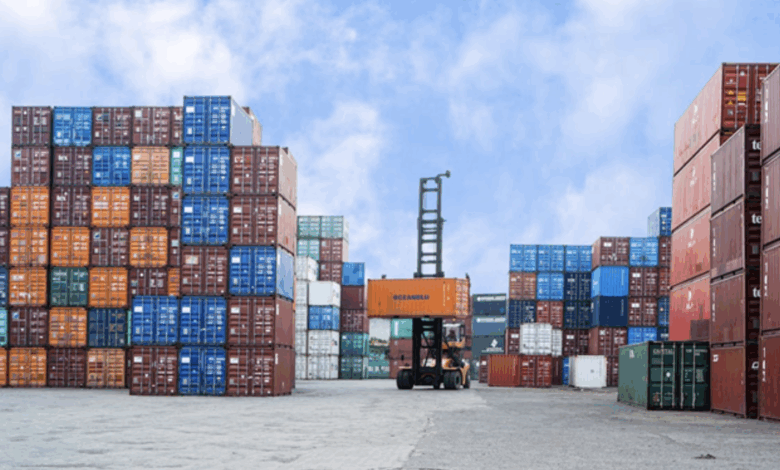
Renting containers these days can be like gambling your way with hidden risks: delays, damage, poor placement, or weather exposure, even if it’s the way of doing your business. Digital twins, however, can effectively flip this script.
They can give you a virtual replica of your container operations, so you can easily predict outcomes, test scenarios, and secure your rental strategy with more timely data. The result? You’ll have fewer surprises and take smarter control over your goods.
What You Need to Know About Digital Twins and Container Rentals
Of course, you want security when you rent a container to make sure your cargo arrives at its destination on time and perfectly according to order. Using a digital twin can give you that virtual mirror of real containers, yards, and logistics at the helm. It efficiently mimics placement, capacity, exposure to weather, stacking strategy, and more.
Also, thanks to its real-time data and predictive analytics, you gain clarity and control over what matters most: avoiding delays, damage, and hidden costs along the way. Today, global demand for digital twins is soaring, with the U.S. market expected to jump to more than $36 billion by 2028. This shows the value you can easily tap into.
Why Digital Twins Matter to Your Container Transport Plans
With everything that can happen at sea, you face risks every time you rent containers for your cargo and investment as a whole. However, digital twins, with their AI cunning, can help you manage these hurdles efficiently. When ports like Dubai’s Jebel Ali first use digital twins, they eliminate nearly 350,000 unproductive moves previously experienced, cut truck servicing times by 20 percent, and enhance cargo flow remarkably.
On a broader scale, companies using this container monitoring advancement across their supply chains cut delays and downtime by 50 to 80 percent, improve forecast accuracy by 20 to 30 percent, and lower procurement costs by up to 6% according to studies.
Also, when you rent a container, you’re exposed to stacking inefficiencies, unpredictable yard congestion, and poor scheduling, whether there are weather challenges or not. With a digital twin, you can test scenarios before they happen and move with more confidence. For example, you can virtualize how cranes move, how trucks queue, and how containers land on sites in the container yard.
Start Right — Understand Rental Basics Before Leveraging the Twin
Before applying digital twin insights, you may need to master core considerations when you rent a container and work only with reputable and competent firms. They’ll provide guidance on terms, lease durations, types, and your mirroring paperwork. Once you’ve earned and crafted that foundation, layering in digital twin insights may become seamless and powerfully handy for your overall operations.
Step-by-Step Guide to Using Digital Twins to Lower Your Rental Risk
Step 1: Build Your Virtual Twin of the Container and Yard
With this mirroring tool, you replicate physical assets in digital form, including container dimensions, yard layout, stacking cranes, weather sensors, and transport routes within your fingertips.
Step 2: Add Real-Time Data Feeds
You can easily link the twin to sensor systems, cargo schedules, weather data, crane logs, and yard occupancy, strengthening your model with immediate accuracy and competency.
Step 3: Run “What If” Scenarios
You’ll be able to simulate lease lengths, transport windows, weather disruptions, and re-stacking orders without much sweat, spotting congestion before it happens. This way, you reduce damage risk when containers sit in foul or dangerous weather.
Step 4: Optimize Logistics Based on Insights
It’s easier to adjust yard layout, crane assignment, freight flow, and service windows to cut idling and reduce damage with the twin tool, refining placement and movement, and saving hours on wait time.
Step 5: Track and Improve Continuously
You measure outcomes versus simulated projections efficiently, as you update the twin model to stay accurate and amplify your ROI.
Why This Method Works Deeply for You
You gain transparency into yard dynamics and container life cycle. You avoid guesswork. You align operations with leasing needs, container type, timing, and weather. Improved planning gives you better pricing leverage, punctual pick up, and minimal damage and penalties.
Digital twins also connect with supply chain tools you already use. Studies report that this twinning tool can reduce freight costs and damages by 8 percent by optimizing how planning tools, warehouse systems, and transport systems work together. This mirroring tool aligns directly with boosting your rental confidence and lowering hidden losses and logistics issues.
Bottom Line
You’re renting containers to move goods, not to wrestle with delays and other hurdles. So, when you tie digital twins into your lease planning, you free yourself from risks and wastage. You create a future where container rental is almost effortless, confident, and more cost-effective.
That’s why make your next rental smarter; go virtual first and lease second, and see how you benefit from it.





